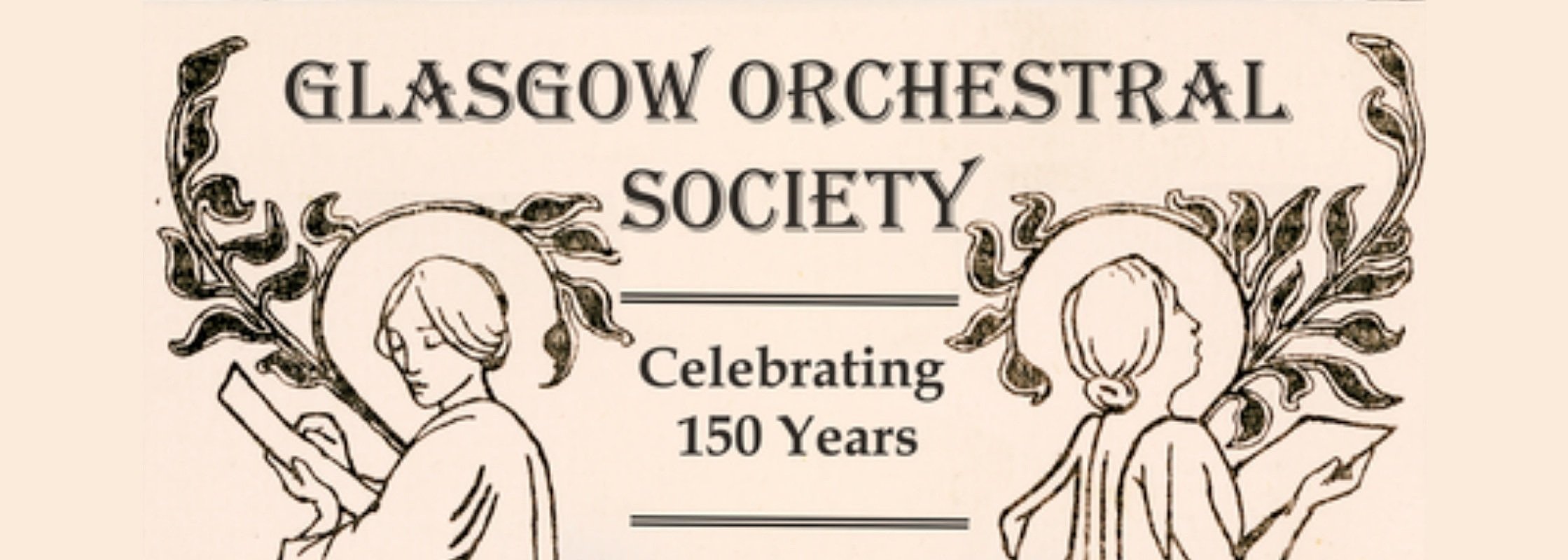
exhbition: glasgow orchestral society
celebrating 150 years
november 2021 - april 2022
History
Up until mid-nineteenth century, there was a dire lack of performing arts in Glasgow. Its status as the “Second City’’ of the Empire mainly came about through its role as a hub of industry and trade, which left little room for art and culture. Hence, if you wanted a society dedicated to bringing the joy of orchestral music to the masses, you had to do it yourself.
On 29th of December 1870, the Glasgow Amateur Orchestral Society was formed. Although the members were amateurs, the group always intended to bring a high standard of performance to Glasgow's underdeveloped music scene whilst establishing themselves as a distinguished institution. Despite the lack of any real competition, they were seen as the last hope of bringing high quality classical music to Glasgow, and they were judged accordingly. These unfair expectations were initially tempered by the understanding that their first few performances where only rehearsals, however once they opened their doors to the public, they also opened themselves up to a torrent of unduly harsh criticism, even fixating on the age of the conductor. They were also criticised for attempting to tackle music that was far beyond their capabilities instead of playing to their strengths as amateurs.
The group soon realised that they needed a new start, one that was unmarred by unfair expectations or comparisons. They made a conscious decision to cease their efforts to please unpleasable critics and instead focus their energy on achieving their original mission: bringing classical music to the masses of Glasgow. To this end, they brought in a new conductor: Ladislao Zavertal, whose youthful drive and energy pushed the group from their rough beginnings into an eight-year era of success.
Unfortunately, after Zavertal’s departure, the Orchestral Society once again entered a difficult period. Without his ability to draw large crowds and bring out the best in his players, patronage declined along with the spirits of the of the performers. They had to move forward instead of back and it was only with a series of innovations that the society was saved. The first of these was the amalgamation with the Glasgow Southern Orchestral Society in 1885, a vital move that kept them afloat while they determined how they should move forward. This led to the appointment of William Thomas Hoeck, who remained with the society for the next 30 years. In addition, women were finally allowed to join the Society in 1885. Although they were not in any leadership roles, this was still a big step in expanding the group’s membership and skillset. All of these factors, as well as the introduction of a new honorary membership system, led to a massive increase in attendance, with the first 1886 concert bringing in about 900 people, and the second getting roughly 1000. For the next few years, the Society continued to go from strength to strength, even attracting the Duke of Edinburgh as patron in 1892, leading to an even greater increase in membership.
After some difficult years in the first few decades of the twentieth century, the Society gained notoriety and was broadcasted on the radio on many occasions. They dropped the word "amateur" from there name in 1958 and the stigma that came with it, finally transcending into a group with their own identity and sound. They continued to thrive well into the present day and have persisted in their mission to bring music to everyone, but not just classical music. They now play modern pieces and film scores as well as their usual repertoire, cementing themselves as a timeless institution that will surely provide their brand of musical escapism for at least another 150 years.
Since October 2011, the Glasgow Orchestra Society has been rehearsing at the Halls every Monday night.
The Exhibition
A wall of the exhibition.
The exhibition gathers archival material covering the last few, successful decades of the nineteenth century. It includes beautifully designed concert programmes, tickets, correspondence, invoices, all describing the history of the Society, its network, its forgotten stories, and its deep connections with the late Victorian Glasgow.
It is not just a musical journey, but a step back into the city’s lost halls and long-gone industries, manufacturers, and businesses.
The exhibition also includes a small activity for children.
The exhibition is open Monday-Friday, 10:00-17:00.
Tickets are free but booking is necessary at info@mbht.org.uk or 0141 918 0700.


